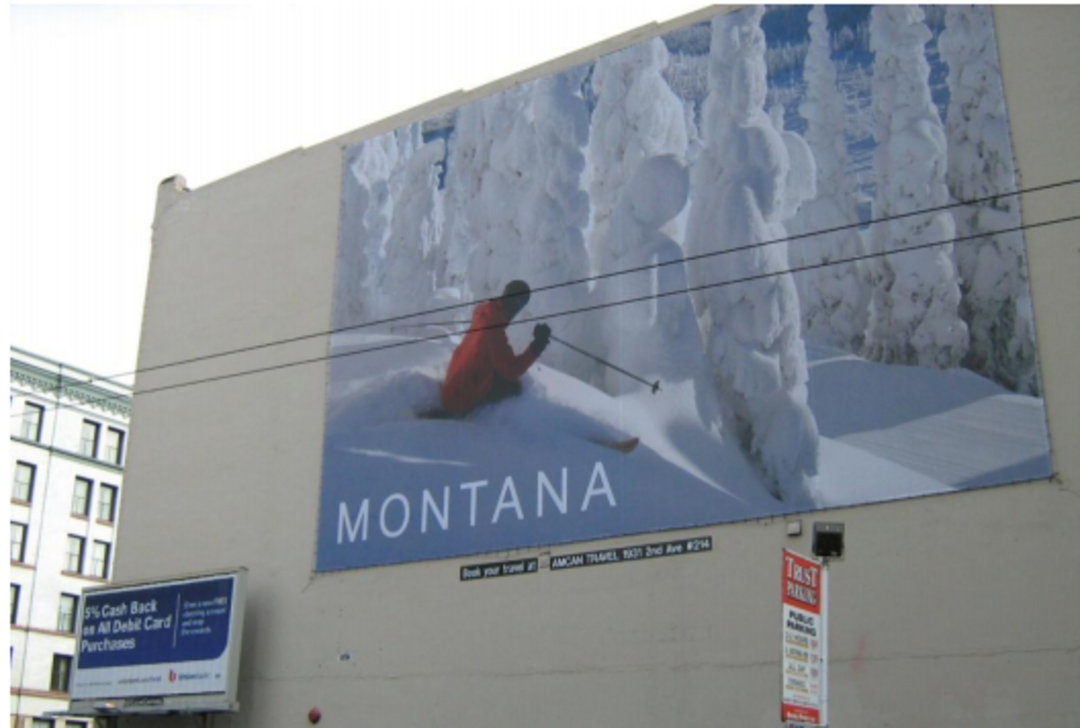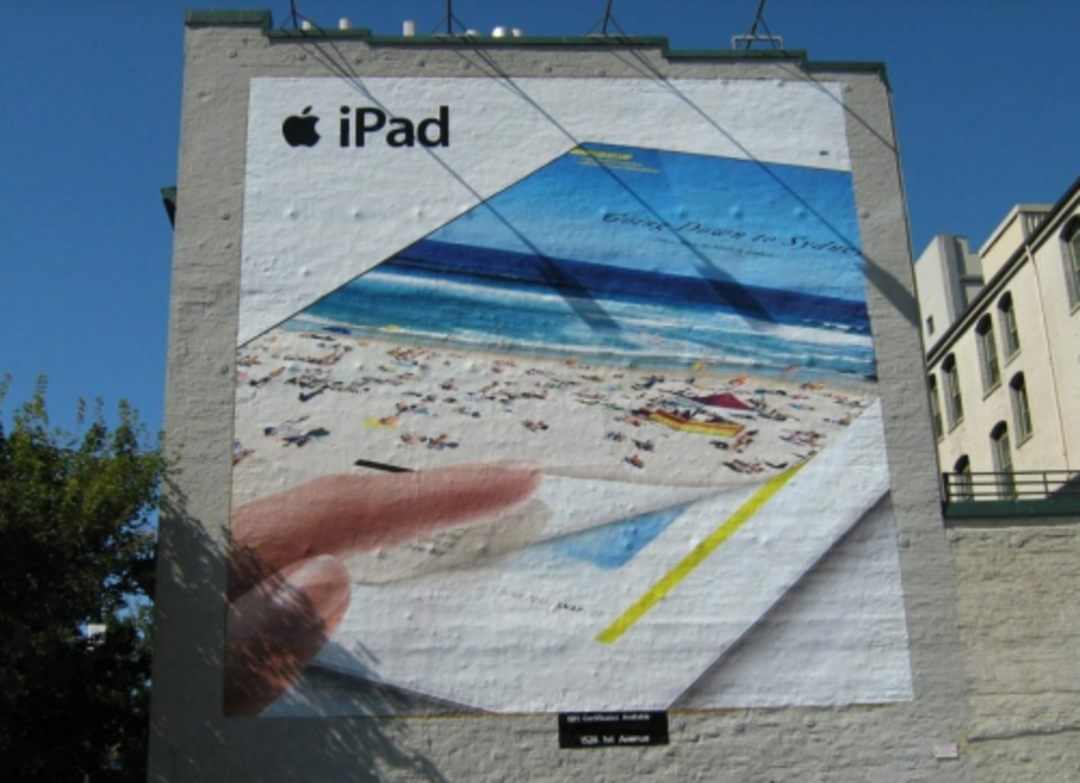Council Considers Advertising Crackdown
After years of debate over how to regulate (or ban) wall signs on the sides of buildings that advertise products or services that aren't available in the building where they're advertised, the city council's Housing Affordability, Human Services, and Economic Resiliency committee met this morning to talk specifics.
Dozens of opponents of the proposal (from Vulcan to Total Outdoor Advertising to the Mariners) waited patiently while the committee slogged through the details, but they were probably encouraged to hear council member Bruce Harrell preemptively parroting nearly all of their points. The opponents argued that giant signs promote civic pride, are easier for drivers to read, and are a way for small businesses to supplement their meager incomes.
Quick background: Currently, the city bans "off-premises" wall signs on the sides of buildings; it does allow businesses to advertise products or services they actually provide (those are known as "on-premises" signs). So if you're Jimmy John's (to give an example from SoDo) and you want to put a huge Jimmy John's sign on your outside wall to attract customers, go for it. But if Subway wants to buy an ad on your wall, that's against the rules.

In practice, though, questionable "on-premises" ads have become common—all a company has to do is offer a coupon or sales kiosk for whatever it's selling (say, a Starbucks coupon on a building in SoDo adorned with a massive Starbucks ad, or a kiosk offering a link to Alaska Airlines' web site in an ID building with a big Alaska Airlines billboard on the side) and the city has historically looked the other way.
Today, Clark's committee took its first public look at legislation that would address that loophole, as well as a couple of other issues city officials have identified as problems: The proliferation of very large wall signs, and the concern that sign lease holders view the potential $500 daily fine for violating the sign code as simply a cost of doing business.
First, the legislation would impose a limit of 287 square feet on all new on-premises signs (the size of a "small" freestanding billboard, as opposed to the "large" billboard size (672 square feet). (New billboards, it should be noted, aren't allowed in Seattle; when it banned new billboards, the city "grandfathered" 600 existing billboards, with the assumption that the number would decrease over time—which it has.)

The idea behind reducing the maximum sign size (currently, it's totally unregulated) is, according to a memo from council staff, to address complaints over large signs' potential to "distract drivers, create visual blight, and cause confusion about the scope of the business activities that are actually taking place on-site."
Council member Bruce Harrell took humbrage at the idea that big signs distract drivers or that they're aesthetically unappealing. Quite the contrary, he said: "I think it shows vibrancy and resiliency. ... I haven't heard a lot of complaints. ... The question of visual blight—that's just personal opinion." As for driver distraction, Harrell said, "Has there been one accident in the city where a person has gotten into an accident and said, 'I was looking at the Montana sign [a huge sign advertising Montana tourism downtown] and I ran into somebody'? It's just a simple question."
Tom Rasmussen responded that the idea that big signs distract drivers "isn't new to this proposed regulation. Historically, driver distraction has been used as a sound basis for adopting signage regulations." Not only is that intuitively obvious—signs are designed to distract drivers and get them to look—but it's the law: In 1981, the U.S. Supreme Court ruled that all signs contribute to visual blight and driver distration by their very nature.
Second, the bill would triple the fine for code violations from a maximum of $500 a day to $1,500 a day.
The current fine, council staffers and the Department of Planning and Development argue, is too low to serve as an incentive for lease-holders—who can make as much as $40,000 a month from sign leases—to follow the rules. Additionally, higher fines would allow DPD, which currently has just 1.5 employees dedicated to sign inspection citywide, to hire more inspectors.
Harrell objected to that proposal too.
"Is there a record that we were imposing a $500 daily fine and it just wasn't working?" Harrell asked DPD's Mike Podowski. Podowski responded, "I think that's been the general feeling of our inspection staff. I don't think it rises to the level of a record.""The gift cards simply didn't seem to pass the straight-face test."
Harrell, doubling down, demanded to know why the city should triple the fine if DPD "can't say it's ineffective?," prompting Rasmussen to jump in: "I think one way you could show ineffectiveness is that you've assessed them and they have not changed their behavior." Podowski, looking relieved, said he'd get a record of citations and penalties to the council.
Finally, the bill would require companies seeking on-premises sign permits to actually provide the product or service advertised on site, eliminating the use of coupons and kiosks and other workarounds property owners have used to get around the law.
"The gift cards simply didn't seem to pass the straight-face test," Clark said. On that point, Harrell was silent.
After the briefing, more than two dozen speakers lined up for and (mostly) against the proposal, including representatives from community groups (El Centro de la Raza—for), the Seattle Design Commission (for, with modifications) and several of the big sign companies (against).
Speakers who opposed the proposal argued that smaller signs might create an even greater distraction for drivers (who would have to look harder to read the signs and might swerve off the road); that the proposal would make it harder to advertise cultural and sports events (Clark noted that those fall under a different area of the sign code dealing with temporary signs); and that the sign proposal hasn't been through a thorough public process.
Clark was having none of that last claim. Rattling off a list of meetings, public and private, with sign companies, arts groups, the Mariners, and a dozen other advocates going back to early 2011—and citing media coverage from KIRO to the Consumerist to PubliCola going back just as far—Clark concluded succinctly: "It would be hard to argue that this has not had a lot of public discussion."
The committee will discuss the sign regs again at its meeting March 6.


